Despite Clinton's Loss, the Pantsuit Prevails
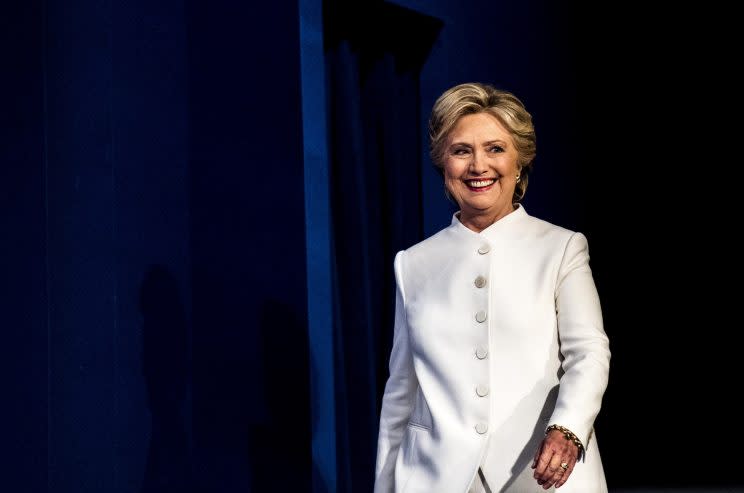
Unquestionably, the United States’s political election process — at the presidential level, at least — has never been so critically endued by image. For better or worse, appearance, be it Hillary Clinton standing hand in hand with a pantsuit-clad Beyoncé or Donald Trump wearing his “Make America Great Again” hat, had an impact on voters. (Of course, public presentation and subsequent perception has always played a role in high-profile elections — but now we live in a world where said presentations are Snapped, meme-d, Tweeted, etc.) We saw every move our presidential candidates made, a thousand and one different ways. Fashion, then, has also likely never been as front and center in an election as in 2016.
So let’s look at our runner-up, Clinton, as a sartorial case study. As first lady, then as secretary of state, then as Democratic presidential nominee, she proved to keep her stylistic choices relatively straightforward — she is famous for her pantsuits, her jackets and her generally composed yet safe approach to dressing. (Though she did wear a $12,495 Giorgio Armani piece to a speech in April in which she discussed income, which was perhaps an oversight.)
A high concentration of Clinton’s appearances over the election had her wearing Ralph Lauren — an undeniably “American” brand, famous and beloved for its grasp of Prep, Western, collegiate, athletic and so on. Lauren dresses Olympians; the company sponsors tennis’s U.S. Open; few of those familiar with fashion wouldn’t name it as a nationally iconic brand. So Clinton’s Lauren preference, in a broad-stroke sense, makes total sense — both are as proudly American as they come.
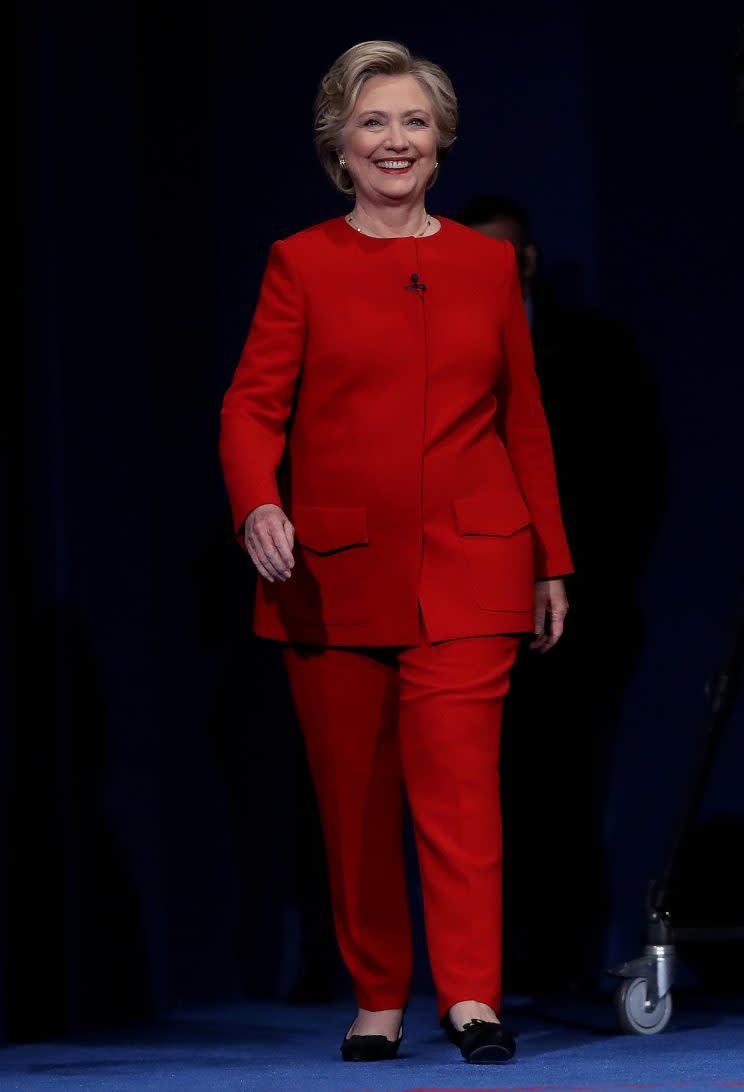
Here are the high-visibility functions at which Clinton has sported Ralph Lauren: the Democratic presidential primary debate, the South Carolina Democratic debate, her Democratic convention acceptance speech, her campaign kickoff on Roosevelt Island in New York, all three presidential debates with Trump, and at the Alfred E. Smith Memorial Foundation dinner in New York City (there, despite what some reported online, Clinton was dressed in a “shirtwaist evening gown”). Every other appearance was in some iteration of a pantsuit — a preference which spawned the secret Facebook group referenced by Clinton in her concession speech and inspired some Clinton voters to wear pantsuits to the polls on Tuesday.
Clinton’s presidential debate picks especially were likely the most scrutinized and the most discussed. Rounding out a patriotic tricolor spectrum — the first, a cleanly collared deep-red wool crepe suit; the second, a navy double-faced wool selection with a contrasting cream-colored shawl collar; and the third, a “curve” cut jacket in white — it’s hard to say whether there was any real tactical decisions behind her picks, but they were effective. Clinton’s final outfit generated a flurry of Internet discussion, with most approving the ensemble. The mock Twitter account for Frank Underwood — a character played by Kevin Spacey on Netflix’s House of Cards, a political drama that sometimes feels uncomfortably close to the truth — posted: “Good choice on the white outfit, @HillaryClinton. Very presidential. #debatenight.” Purists won’t love to hear it, but that kind of viral buzz helps with a candidate’s promotion, without doubt.
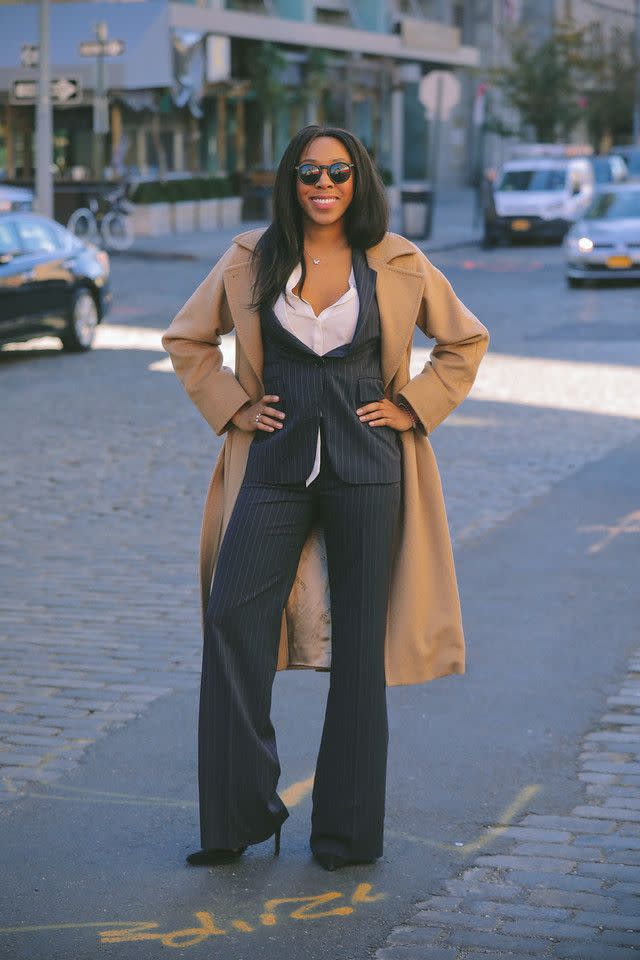
A Ralph Lauren representative did not confirm if there was a formal arrangement between Clinton and the company. The correspondent did, however, indicate that Clinton presented Lauren with the James Smithson Bicentennial Medal in 2014, for his donation — of $13 million — to restore the original Star-Spangled Banner.
Fern Mallis is the founder of New York Fashion Week and the host of a successful interview series called “Fashion Icons” held at the 92nd Street Y in New York (of which there is now a book, with a forward, as it happens, by Ralph Lauren). She points out that Clinton and Lauren’s relationship dates back much further.
“[Lauren] is the most iconic American designer and has worked closely with the White House ever since we created Fashion Targets Breast cancer in 1994. The CFDA launched it at the White House with Mrs. Clinton, who was first lady at the time,” says Mallis. (The CFDA is the Council of Fashion Designers of America, where Mallis served as executive director from 1991 to 2001.)
Says Mallis: “I don’t think Hillary was trying to ‘send a message,’ but was trying to look her best — her most presidential. Ralph has clearly done a great job of dressing her — she is not an off-the-rack shopper. I actually think Ralph Lauren might be missing a great opportunity by not making versions of these suits available for sale in their stores, as there is a great demand for these clothes, as there always is when Michelle Obama wears a designer dress.”
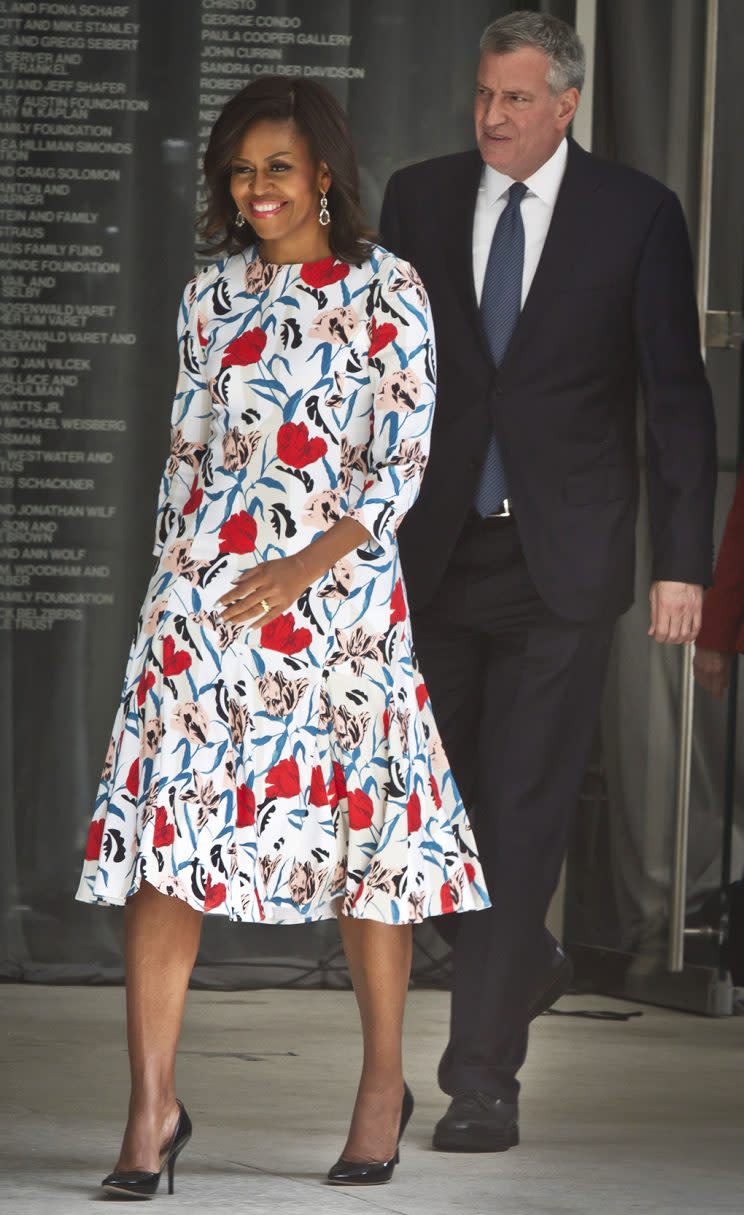
Obama, now in her final weeks as first lady, is the splashy antipode to Clinton’s directness when it comes to dressing. FLOTUS has become known worldwide for her somewhat daring style, in pieces often designed by lesser-known names. This isn’t Clinton’s endgame — her choice of Ralph Lauren is a reflection of her modus operandi; steady and proven. And, either way, Mallis adds that “these ‘endorsements’ make a huge difference to a designer’s business and career.” Melania Trump — who will become the U.S.’s new first lady when Trump enters the White House next year — has so far made waves with her fashion choices, too (from Gucci to Roksanda Ilincic). In fact, Trump wore a flowing white jumpsuit by Ralph Lauren as the election results rolled in last night.
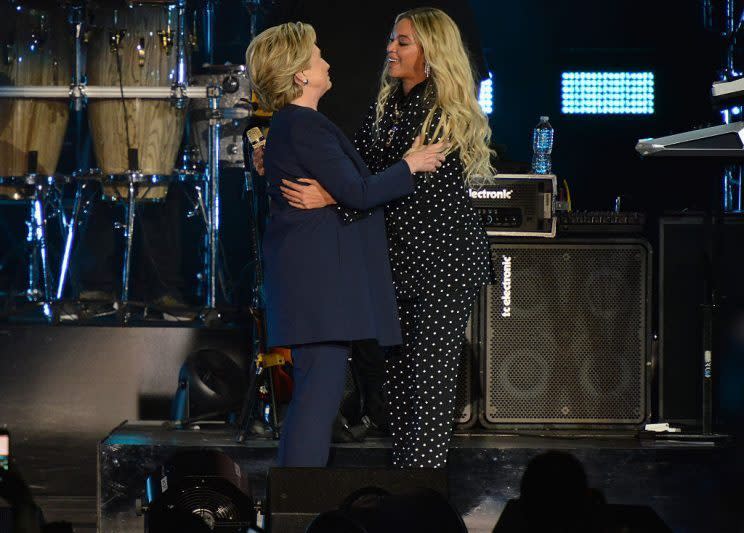
Clinton’s look worked for her, and it became a standalone phenomenon in its own right. In the final days before the election, Beyoncé performed — with a phalanx of backup dancers — at one of Clinton’s campaign stops. Everybody onstage was wearing a pantsuit, right down to those backup dancers. Saturday Night Live’s Kate McKinnon has riffed on them, too. But Clinton’s alliance with Ralph Lauren is noteworthy because, as mentioned, it embodies a constancy and service-to-our-nation attitude that was essential to Clinton’s message. Mallis concludes: “Ralph Lauren has created a worldwide business empire based on acquiring ‘the American Dream.’” This morning, Clinton delivered her concession speech in New York. There, too, she wore Ralph Lauren, this time picking a charcoal-and-purple pantsuit. The violet hue was especially poignant — it represented a bipartisan blend of both sides of the political divide. Clinton will be recognized, forever, for her love of and commitment to that dream.
Follow us on Instagram, Facebook and Pinterest for nonstop inspiration delivered fresh to your feed, every day.
